Media | Articles
Buick Wildcat returns as EV, AMG’s 11,000-rpm monster hybrid, Jaguar SUV remembers ’88 Le Mans
Buick begins electric era with Wildcat concept, new logo
Intake: The latest automaker to announce all-electric plans is Buick. The company has stated that it will be all-electric by the end of the decade, with its first EV arriving in 2024 for the North American market. The brand’s pivot will be accompanied by a new logo, as well as a new styling language, the latter of which will be previewed by the Wildcat EV concept seen here. (It’s hardly the first time Buick’s used the name; it appeared on a slew of mid-century roadster concepts of sporting intent, then on a teardrop-shaped performance prototype in 1985 boasting a McLaren Racing–developed V-6). Today’s battery-powered 2+2 coupe features plenty of expressive lines, from the forward-facing grille and lighting elements to the swooping rear cabin line that cascades gradually down to the rear of the vehicle. There’s a host of neat tech, including side-view screens mounted just below the interior’s high beltline and a single, broad screen spanning the width of the instrument cluster all the way to the center stack. Those 18-spoke Jet Age-inspired wheels are a nice nod to wild Buicks of the late ‘50s and early ’60s. Buick says the concept is “built to be a platform for futuristic features such as artificial intelligence, biometrics, and aromatherapy,” possibly hinting at up-scale intentions for the brand’s future. Speaking of future, all Buick EVs will incorporate the Electra name, both as a nod to the brand’s 1959–72 nameplate, and as a convenient phonetic indicator that that these models run on electrons rather than on hydrocarbons.
Exhaust: Expect the Buick EVs—like their siblings at other brands—to be built on GM’s Ultium battery platform. We’ve seen that Cadillac’s Lyriq will offer more than 300 miles of range; expect something similar for the first production-spec Buick EV. That said, we’d be shocked if the first EV weren’t some sort of crossover. Buick killed its last sedan, the Regal, back in 2019 and currently only sells three crossovers—the Encore, the Envision, and the Enclave, in ascending order of size. The Wildcat concept is certainly a nice headline grabber, but betting an all-electric future on a 2+2 coupe is … not a big-game proposition in today’s SUV-obsessed market.
Jay Leno hosts prewar, V-12 Spanish automotive royalty
Intake: In this week’s edition of Jay Leno’s Garage, Leno is visited by what he refers to as “automotive royalty”—a 1933 Hispano Suiza V-12 from the legendary Nethercutt Collection. The J12 Type 68 is one of 120 built, one of nine bodied by Henri Binder, and the only Binder-bodied version on a 146-inch wheelbase—which is actually a short wheelbase, compared to the others (157.75 inches). Purchased by the late J.B. Nethercutt, and presented by his great grandson Cameron Richards, the 250-horsepower Hispano Suiza V-12 could effortlessly cruise at 70–80 mph and had a top speed of 120+ mph, which Richards says “was insane for the time.” Leno calls it “one of the most brilliant cars of all-time.”
Exhaust: Although Hispano-Suiza is far from a household name today, despite its modern-day resurrection, the company was a pioneer in aircraft and automobile technology during the first half of the 20th century. During the 1920 and ’30s Hispano Suiza built some of the fastest, most luxurious, most intricate, most well-engineered and most expensive automobiles you could buy, and the 12-cylinder J12 was the biggest, most powerful, and most expensive of them all. And not only is the J12 the ultimate Hispano-Suiza, it’s one of the ultimate prewar luxury cars period.
Marketplace
Buy and sell classics with confidence
At long last, AMG’s F1-powered supercar arrives
Intake: It’s been delayed longer than a drizzly Monaco Grand Prix, but finally the Formula 1–powered Mercedes-AMG One has arrived. First revealed as a concept in 2017 to celebrate AMG’s 50th anniversary, the One is now road-ready in time for its 55th birthday instead. The carbon-fiber hypercar is the first road-going machine since the Ferrari F50 to run a genuine F1-based powertrain, utilizing the 1.6-liter turbo V-6 that has dominated (until this season) Grand Prix racing’s hybrid era. The combustion engine is accompanied by four electric motors: one fitted to the engine itself, one to the turbocharger, and one to each of the two wheels; the combined output of this complicated arrangement is 1063 hp as the engine fizzes to its 11,000 rpm peak.
The One’s carbon-fiber monocoque is clothed in carbon body panels with active aerodynamic elements to increase downforce or reduce drag as required. Suspension is by a five-link system with pushrod spring struts, and features active damping, which was banned in F1 many years ago. One driver will be faced with a myriad of modes, with variations that allow full-electric propulsion or maximum-attack race pace, which is neatly named “Strat 2.” On top of that there’s also a DRS button which retracts the rear wing for a higher top speed.
On the subject of speed the One will max out at 219 mph, along the way reaching 62 mph in 2.9 seconds, 124 mph in seven, and 186 mph in 15.6. Harvest enough power from the MGU-K system into the battery pack and the One can travel 11 miles on electric power alone, although who of the 275 customers would want to do that after waiting such a long time to get their hands on this near $3 million masterpiece?
Exhaust: Making this F1 powerplant manageable and legal on the streets was a big, hairy deal. In 2018, then-AMG boss Tobias Moers told Top Gear that getting a stable idle at an emissions-compliant 1200 rpm was one of the biggest challenges and the principle cause of a nine-month delay. (Or so AMG hoped.) In F1 tune, the hybrid V-6 idles at five grand, and throttle leakages simply don’t matter—no neighbors’ dogs raise a racket, either. The chief value of this car is to be the superlative statement of hybrid AMG performance (under the E Performance nameplate, separate from AMG-fettled versions of the all-electric “EQ” models): Though Mercedes-Benz CEO joked at last week’s Monaco Grand Prix that the board must have been drunk to approve an F1-powered road car, this production-spec model indicates that, between AMG and its High Performance Powertrain (HPP) Formula 1 compatriots, people fought stubbornly indeed for this car’s existence.
Orange you glad Toyota made the GR86 Special Edition?
Intake: Toyota has unveiled an 860-unit run of its lovable GR86 sports car, replete with a killer orange paint job and excellent shoes. Each and every 2023 GR86 Special Edition will be slathered in exclusive Solar Shift orange paint. Other visual differentiators include a racy black GR C-pillar graphic, a special edition badge, and wicked 18-inch matte-black wheels wrapped in Michelin Pilot Sport 4 performance tires. A GR cat-back performance exhaust system comes standard, ensuring that the revised 2.4-liter boxer-four has a throaty growl everywhere you cruise. Because transmission choice is not specified in the announcement, we’d bet that you can have your Special Edition with either the six-speed manual or the six-speed automatic. The GR86 Special Edition is based on the GR86 Premium, which nets suede-trimmed seats and a better sound system, in addition to other upgrades. The limited-run Special Edition will surely cost more than the trim level upon which it’s based, so expect the price tag to handily eclipse GR86 Premium’s $31,125 asking price—we’d guess somewhere around the $35,000 mark.
Exhaust: We reviewed the GR86’s twin, the 2022 Subaru BRZ, last summer and found it to be a total sweetheart with meaningful improvements that made it superior to its predecessor. We’d expect the same to be said of the little ‘Yota. In the waning days of the internal combustion engine, who would have guessed that conservative Toyota would be leading the charge with driver-centric, joyous little rockets like the GR86 and the rally-tastic, 300-hp GR Corolla? Such championing of affordable performance is more than justification for a brightly hued special edition. Rock on, Toyota.
Jaguar F-Pace SVR 1988 is a Le Mans–inspired limited edition
Intake: In June 1988 the purple and white Jaguar XJR-9 driven by Jan Lammers, Johnny Dumfries, and Andy Wallace took the checkered flag at the Le Mans 24 hour race, having completed 394 laps of the French circuit. Now Jaguar is paying tribute to this famous victory with… an SUV. To be fair the new F-Pace SVR Edition 1988 is no slouch, with its 550-hp supercharged V-8 sending it to 60 mph in 3.8 seconds and on to a top speed of 178 mph should you happen to have access to the Mulsanne Straight. Put together by Jaguar’s SVO division the 1988 wears Midnight Amethyst paintwork, Champagne gold 22-inch wheels and sunset gold exterior detailing. Only 394 examples–one for each lap in 1988–will be built, priced at $110,000.
Exhaust: This isn’t the first time Jaguar has celebrated its Le Mans win with a short-run road car. Straight after the victory in 1988 the company released just 65 XJ-S V-12s in British racing green with gold alloy wheels. Which would you pick to to fly the flag for the big cat’s win?
Mercedes’-Benz base GLC goes hybrid for 2023, adopts C-Class touchscreen
Intake: Two years after giving its volume-seller SUV a light refresh, Mercedes is dipping into its parts bin for a more intensive overhaul. A new engine and new center touchscreen, both borrowed from the C-Class, lead the changes for the base “300” model GLCs (in rear-drive or 4MATIC AWD configuration). The GLC 300 is the second Benz to get the M254 mild-hybrid turbocharged inline-four, which makes 3 more hp than in its 2022 C-Class debut (258 total, a substantial improvement over the 2020 base model’s 225 horses). The SUV displays a slightly wider stance and 2.4 inches of extra length, a stretch most noticeable in increased trunk capacity (2.5 additional cubic feet, for 21.9 total). Thanks in part to a relocation of the side mirrors from the A-pillar to the belt line, the GLC is now a slightly slipperier fish, with a cD lowered to .29 from .31 if you spec the most aerodynamically favorable wheels. Inside, the center console swaps its horizontally oriented 12.3-inch touchscreen for the taller, 11.9-inch unit found in the new C-Class. In the GLC, if you’ve specced the 360-degree camera array via the Parking package and are driving below 5 mph, this screen will stitch together front video feeds to let you see underneath the nose and front axle of the vehicle.
Exhaust: Mercedes-Benz may want to cull its “budget luxury” offerings in search of higher profit margins and increased prestige, but the addition of a third GLC production site (at south Germany’s Sindelfingen plant, which also assembles E-Classes and S-Classes) indicates that this cute little cash cow is going exactly nowhere. Brighter-eyed and bushier-tailed, with a more glamorous array of interior pixels, the 2023 GLC is well-poised to maintain its status as Mercedes’ best-selling vehicle, as it has been these past two years. As for that “transparent hood,” it’s fairly obvious owners are more likely to be watching out for parking blocks outside Starbucks than rocky off-road hazards.








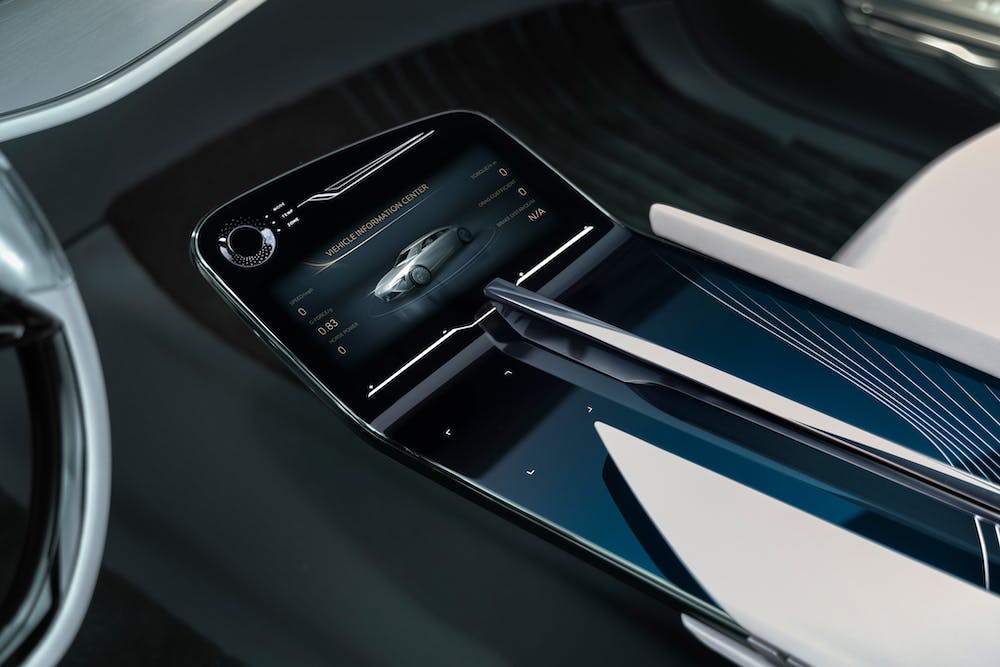





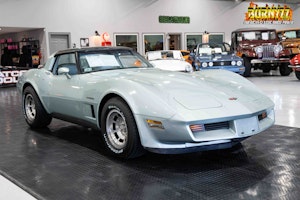
























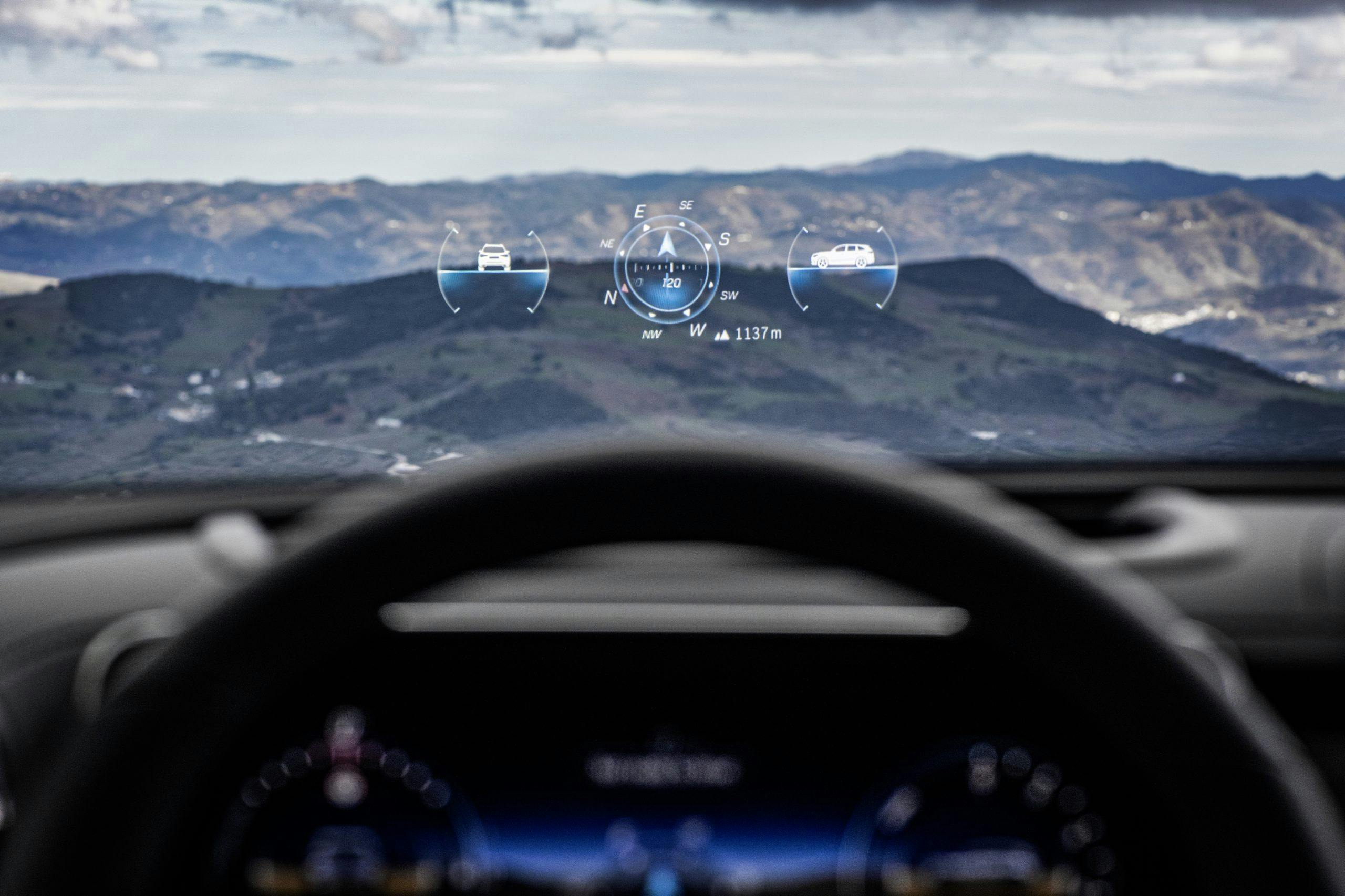


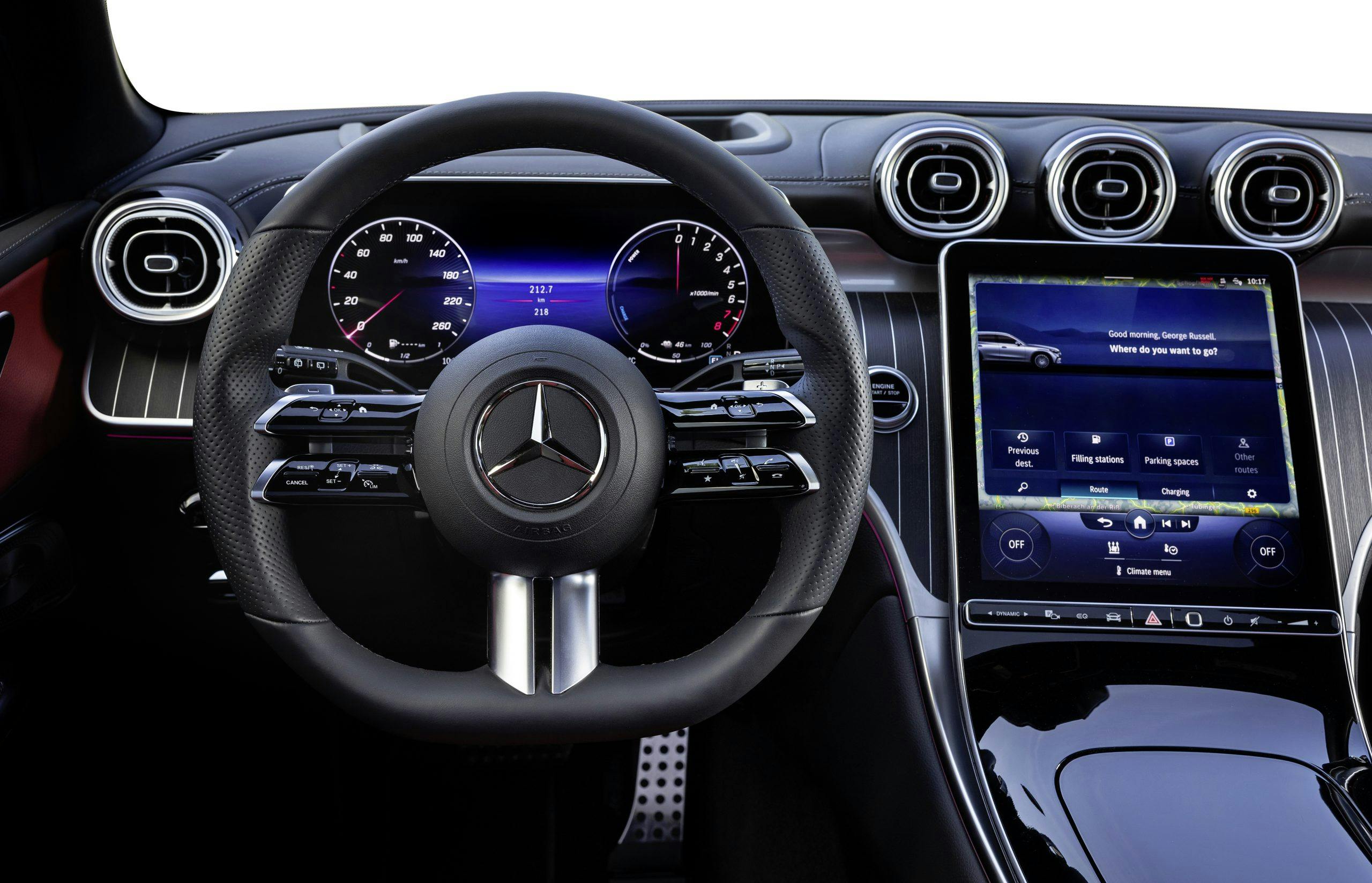




































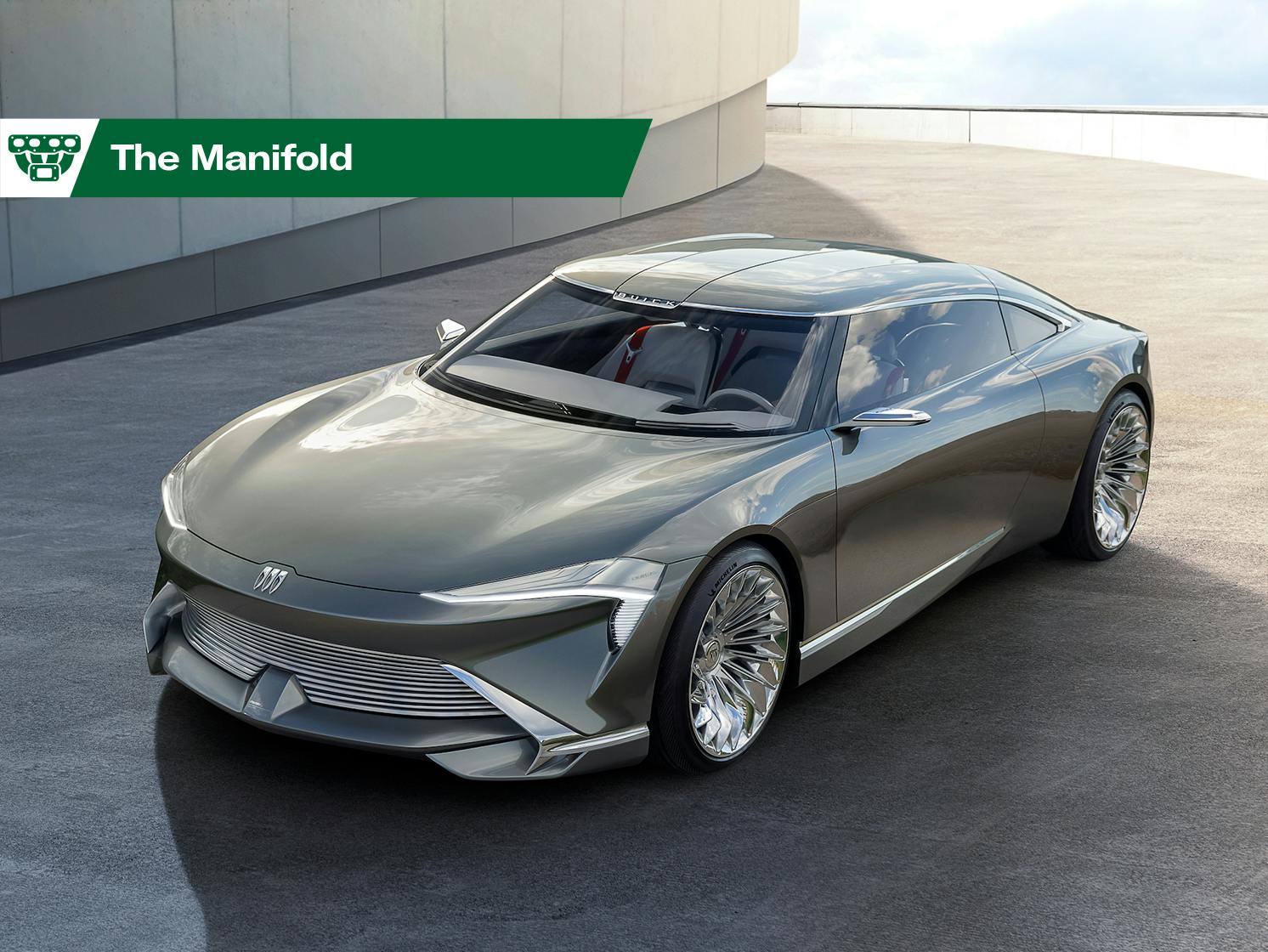
BEAUTIFUL SAYS IT ALL